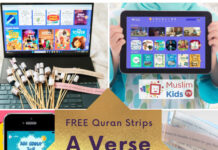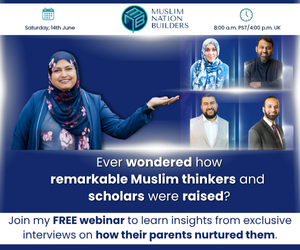This post is sponsored by Miraj Stories Use the link above for the discount.
A good Islamic resource is an unlimited investment in the child’s mind and spirit. Its selection deserves thoughtful attention – especially when it comes to Islamic education because our children’s foundation of faith depends on them. Parents may outsource to Writepaper or pave their own path. Books are beneficial for people of all age groups, but it’s essential for children because:
- Books develop and strengthen vocabulary
- Reading can improve intelligence and lead to innovation and insight
- Social and emotional intelligence
- Curiosity
- Memory
- Concentration
- Brain function
Reading is a big part of our homeschooling life. But this year, I ended up in ICU due to covid complications during pregnancy and hence I was so grateful for Miraj Stories being our go-to app for Islamic education and even read-aloud sessions. We have been buying their annual subscription for the last 3 years, and keep re-subscribing each time because of how much kids love it alhamdulillah. For reading, we just focused on audiobooks because I didn’t even have the ability (let alone the required energy) to read the books to the kids myself as Allah gave me a new life, to be honest, and recovery took a lot of time for me. Alhamdulillah kids learnt to be low maintenance after this difficult period of life without me and were grateful for whatever time we got together – even if it was not filled with crafts and activities. We valued our time and meaningful conversations together. Hence I will start this list with:
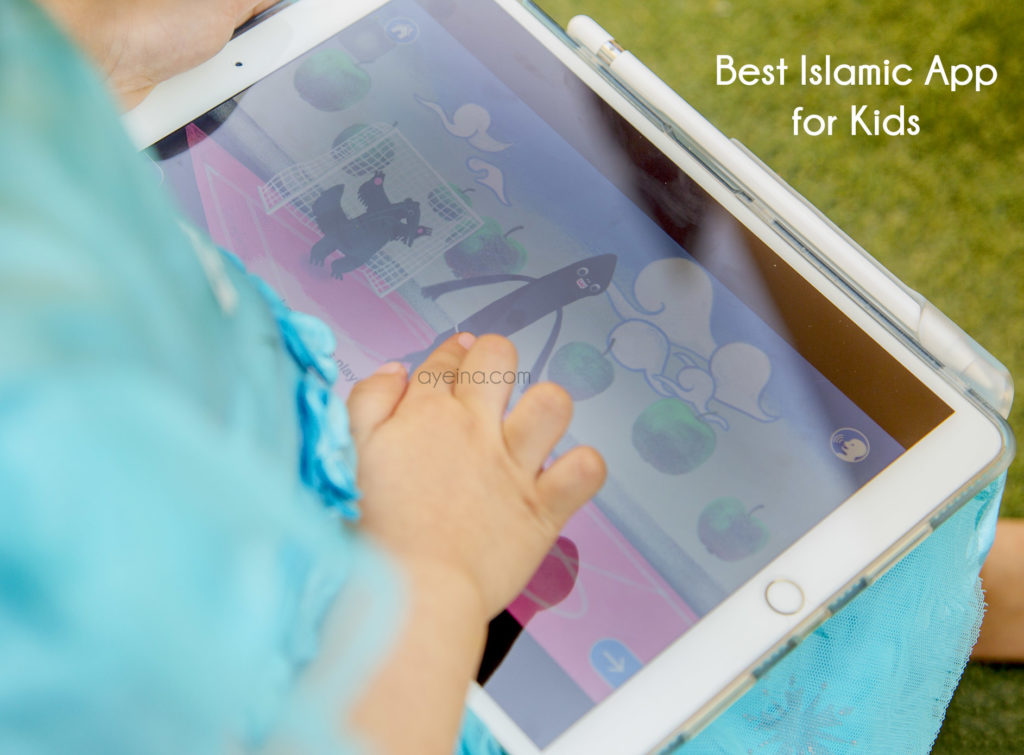
1: Audiobooks / Digital interactive books and games
Reading aloud helps increase fluency. Audiobooks have transformed “reading” into something that can be done during car rides or even while drifting off to sleep. Audiobooks can promote an advanced vocabulary and nurture a love of reading while making the process much easier and the one that doesn’t take up space. When it comes to helping children learn to read, experts say the role of audiobooks is twofold: to help children with the process of identifying words by modeling fluent reading and expanding their vocabulary, and to help motivate new or struggling readers by giving them a taste of how fun reading can be. When children are first learning to read, they have to decode, or sound out each word, translating it from a symbol to something with meaning. Because they’re working so hard just to read each word, they can have a hard time retaining the information and following along. Listening to an audiobook does that work for them, allowing them to retain the narrative. This is especially true for reluctant readers or those with learning differences, as reading with their ears can expose kids to more advanced vocabulary than they would attempt in print. Some kids may be ready to learn at a level above what they can read, and audiobooks enable them to consume more complex information than they could feasibly read on their own.
One small study of 20 students with reading disabilities found that students who were given audiobooks to listen to while following along with the text saw a greater increase in reading skills after eight weeks compared to those who were just given the text. Researchers measured progress by comparing how many correct words students could read per minute before and after the eight-week treatment. While the students who were given only print books could read about four more words per minute than before, students who were given audiobooks in addition to print books saw an increase of 17 words per minute.
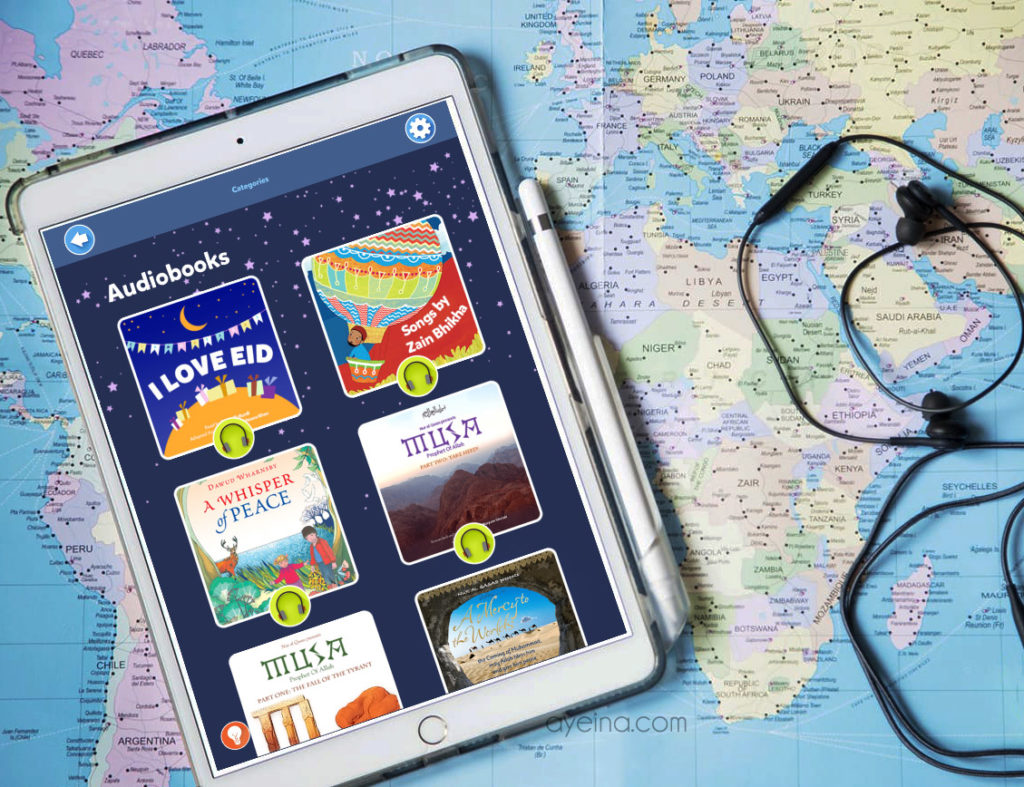
Kids can even listen to them while playing with their legos etc. In our home, we usually turn on Miraj audiobooks at night (it makes up for the bedtime reading sessions when I’m too exhausted). Good quality Islamic books are not easily available in libraries (even when you live in a Muslim country), so having them easily accessible in such a cost-effective way is a blessing for sure. My 6-year-old has been wanting to know more about historical figures like Salah-ud-din after listening to their stories in the Miraj audiobooks section. It helped us explore Islamic history beyond Prophets and Companions alhamdulillah.
Immersion reading immerses you in a story by narrating and highlighting text as you read. It sparks an extra connection that boosts engagement, comprehension, and retention, taking you deeper into the book. The feature is especially enjoyed by kids learning to read.
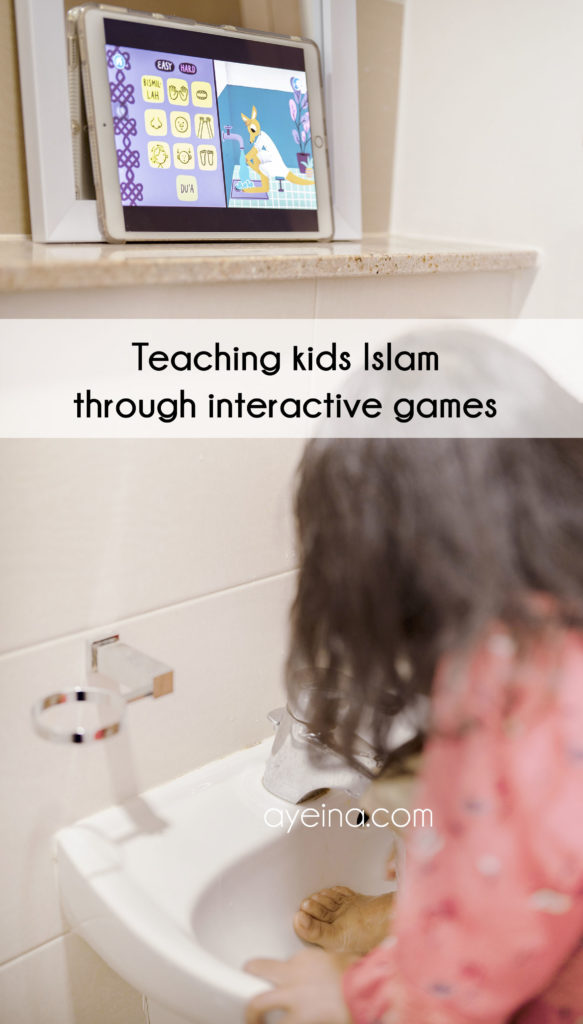
2: Shadow Play
Making shadow puppets with your hands has been a pastime since the earliest of times. You may have even taught your kids how to do it. Shadow play is a great way to bring stories to life in an interactive manner. We loved creating silhouettes for Masjid Al-Aqsa and Masjid Al-Haram to go with the audiobook “Scents of Paradise – the story of Isra wal Miraj” – How Muhammad ﷺ traveled from Makkah to Al-Quds (also known as Jerusalem) upon Buraq (a white animal, bigger than a donkey and smaller than a mule) and then ascended from Bait al-Maqdis to the heavens with Jibreel السلام عليه. The summary of the whole story can be read in Sahih Muslim as well. You can download the free printable HERE and create your own shadow-play props. We put some cardboard at the back of the printed cut-out too to make it stay strong and last long before we attached the stick to it. We covered the cardboard box with brown kraft paper tape wherever needed to keep the focus on the title cutout “Isra and Miraj“. The middle portion of the box was cut out to make way for light projection. We used a thin A4 paper for the background as we didn’t have tissue paper sheets (but it did a good job alhamdulillah). If you are using the props vertically then make sure you cut out a section beneath the box for your props to make way from below. Kids used these props to make their own stories as well. My 6 year old used the arrow from the props for Tawaf and Sa’ee rounds in her story of a non-Muslim teacher who becomes a Muslim and goes for Umrah and then takes her students to Palestine to show them the beauty of Al-Aqsa Mosque. The possibilities with these silhouettes are endless.

3: Story stones / Nature play (storytelling basket)
A storytelling basket is simply a basket of pieces that can be used to narrate a story. Story stones are smooth, flat stones that you can find at the beach or a craft store. Each stone can be painted with a picture of a character or animal or object on it. As long as you have a few of the characters or objects featured in the book, your child’s imagination will likely take care of the rest. Your child can choose a stone from the basket, and start a story based on the picture on the stone that they’ve chosen. Another stone is picked from the basket, and the story continues. One child can be telling this story, or you can pass the basket around at circle time, so that each child picks a stone, and adds another sentence to the story.
4: Puppet Show / Wooden peg dolls / Lego characters
Another fun activity is using the puppets/dolls to tell a story or put on a show. This activity puts arts and crafts, acting, set design, and more into play. You can get creative with the materials: For eg – paper bag puppets, popsicle stick puppets, sock puppets, toilet tube puppets, wooden spoon puppets, wooden peg dolls, lego characters, or crochet dolls like we used with the story “Azeeza’s first fast” on Miraj Stories. This Ramadan, my 6-year-old insisted upon fasting the whole day so I let her try it out. Even though I told her that she is allowed to stop the fast whenever she wants as it’s not an obligation upon her, she was firm that she wanted to complete it. When the time of Maghrib Salah came near and seeing her younger sister eat food in front of her made it harder, I turned on this story as a source of motivation for her.
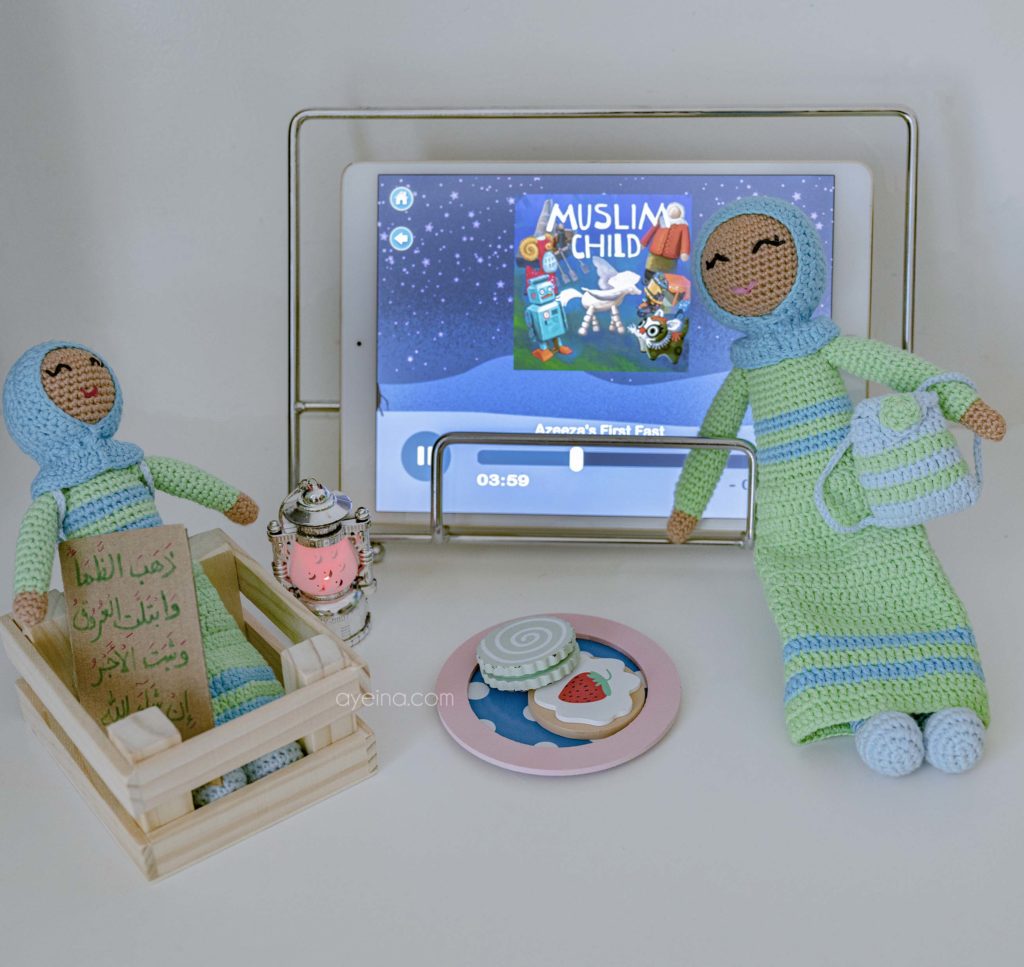
5: Role play / Drama
Kids love to dress up and role-play whether it’s a story about a warrior, a firefighter, a teacher, or a king/queen. Children may repeat the dialogues from the story they have heard. Staging literature with physical characters can bring it to life while building a life-long memory in shaa Allah.
My kids have been obsessed with the story of Salah ad-Din after listening to the 4 part audiobook series on Miraj Stories App. They have been after me since then to make a DIY sword and shield for them so they can go save Al-Aqsa (our third holiest Mosque in Islam) like the legendary Muslim hero Salah ad-Din did. They saw a Youtube tutorial on how to make a cardboard sword and made the whole base for it. I simply wrapped the foil for them and wrapped an old belt around the handle with foam board as the middle part to make it look more presentable. For the shield, I simply gave them our laundry basket lid from Ikea “KNODD“. You don’t necessarily have to buy expensive costumes for kids so they can enjoy the role play. Anything around the house can be turned into their favourite props. You’re bound to find something in your home that will transform your child into one of the story’s characters.
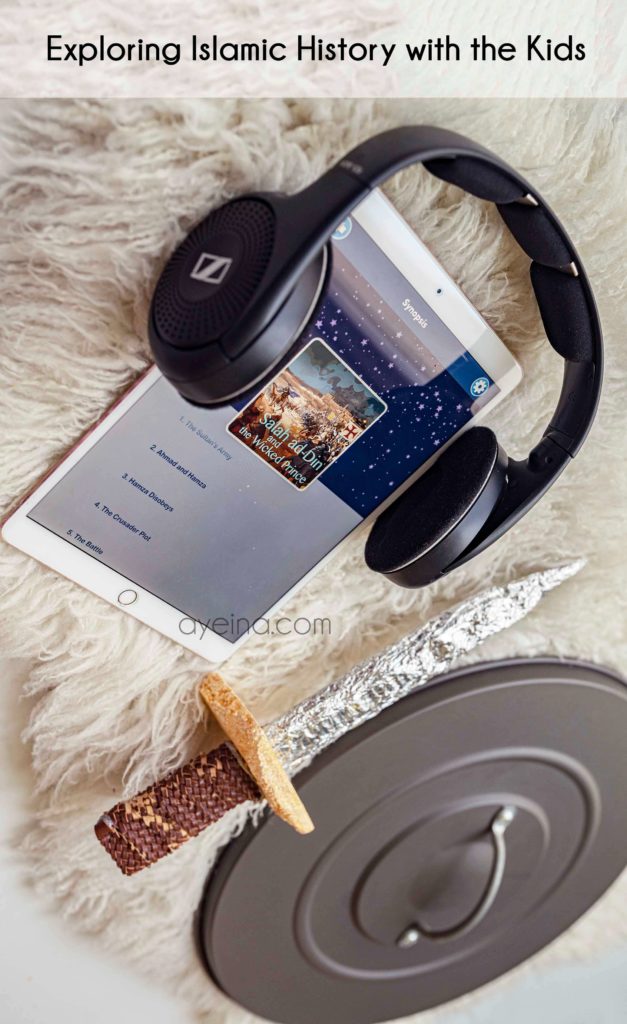
6: Play Dough / Plasticine / Modeling clay
You can either use oil-based clays (such as Plasticine), or flour-based clays (such as Play-Doh), or earth-based clays (such as Air-Dry Clay). Playing with any of them is a fantastic sensory experience that allows children to build hand strength and coordination and encourages them to be creative and build their imaginations.
7: Arts and crafts / Activities related to the book
Get started by making a list of your story’s main characters, then dig through your craft cupboard and recycling bin to find some fun supplies and get crafting! Check out these posts from 2021, 2020, 2019, and 2018 for creative ideas.
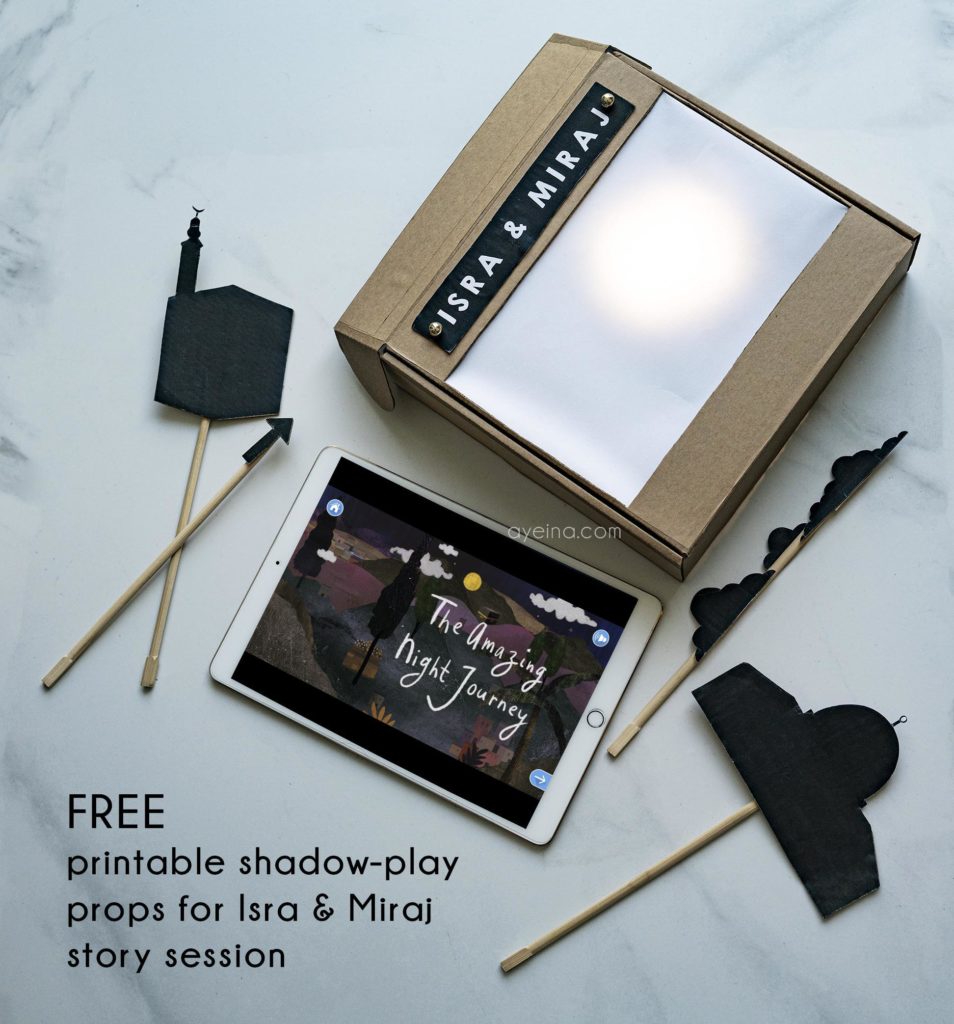
How to Choose the right Islamic books and resources for your kid’s age?
The key to creating lifelong readers is parental involvement. Parents have the power to motivate children through example and by staying connected. I love the new Islamic books section in Miraj Stories. It has saved us a lot of money as most Islamic books are not cheap – especially if you factor in all the shipping costs. There are different things to look for in Islamic books and resources depending on the age of your children. The most important being – AUTHENTICITY! Make sure that whichever resource you choose, holds authentic Islamic information and references. Here are some ideas for other things to look for (which you will find in a lot of books already in Miraj App):
Ages 0 – 4 (Babies and Toddlers):
Young kids are natural listeners and respond well to books with good rhythm and simple text. These books should engage their attention and get them laughing, rhyming, clapping, or repeating catchy words. Books for babies and pre-schoolers should be in their home language whenever possible (the language that is mostly spoken inside the home). Very young children are attracted by brightly coloured pictures of simple objects. Wordless books stimulate them both visually and mentally and encourage them to create their own stories. They enjoy books with lots of action about everyday experiences that help them explore and understand their world.
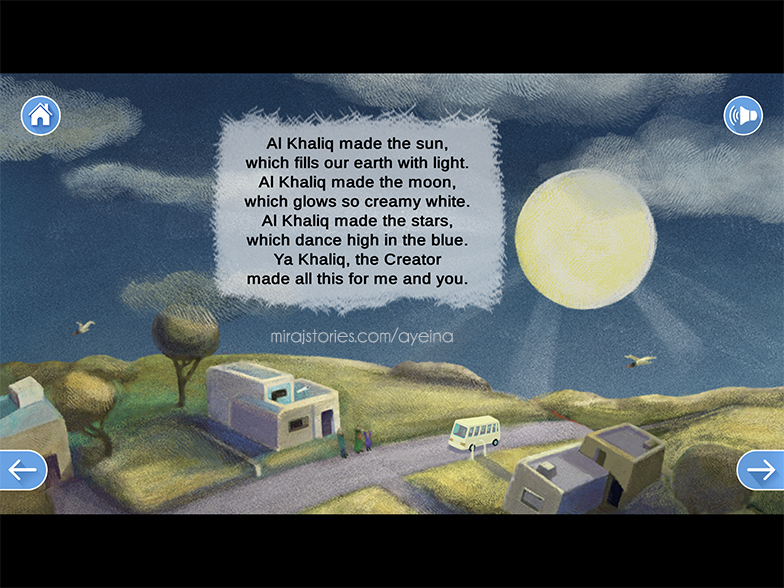
Ages 4 – 8 (Early School Years):
These children like listening to slightly complex texts with good rhythm and effective word repetition. The goal here is to learn to love stories! Kids can tell you their thoughts about the plot and characters in their own words. A few children may learn to read before they are in the first grade. Most learn during first grade. Many learn even later. Books for preschoolers should have simple stories with basic plots, engaging illustrations, and a fun text that lends itself to being read aloud. The storyline should move rapidly so it can be read in one session. Select books that promote imagination and solve problems in a creative way. Young children enjoy books about real-life circumstances that mirror their concerns. They often like to hear the same story over and over so Miraj Stories come in handy that way as it does the reading for you – saving you your vocal cords. Picture books are targeted at children ages 2 to 8. They primarily use illustrations to tell the story and often share life lessons related to emotional intelligence (empathy, forgiveness, kindness), relationships, social connections, and morals. Easy Reader books, also called Emerging Reader or Beginning Reader books, are for children who are just learning to read by themselves. The books include short, uncomplicated storylines that are told with words and illustrations, but the illustrations are secondary and not necessary for understanding the story. Words are simple, sentences are short, and there is plenty of action and dialogue. Informational books are non-fiction and are written about topics that children have a natural interest in. They are usually simple in style and focus on objects, subjects, and concepts that are familiar to the children’s environment.

Ages 8 – 13 (Pre-Teens and Tweens):
One can try out different genres like adventure, realistic fiction, and nonfiction stories with this age group. Consider the personality traits and personal preferences of a child when choosing a resource for them. Publishers sometimes indicate on the cover of the book the age level or grade level for which they think that book is most suitable. Don’t hesitate to choose a book that may be suggested for someone older than your child. If a book is beyond a child’s reading ability, it can be read to him or her now, and later on by the child. Chapter books are for children ages 7 to 9. These books have more content and more complex language than the children may have seen before. Therefore, they are broken into chapters to help the readers better comprehend the material. Juvenile books can be fiction or nonfiction. These books speak to the emotions and intellect of the reader. They are written on subjects that are very relevant to the reader’s life and that capture the attention of children a little older and younger than the target age. This genre is for children from 7-18 years of age and can include chapter books as well as books for middle grade, teen, and young adult readers.
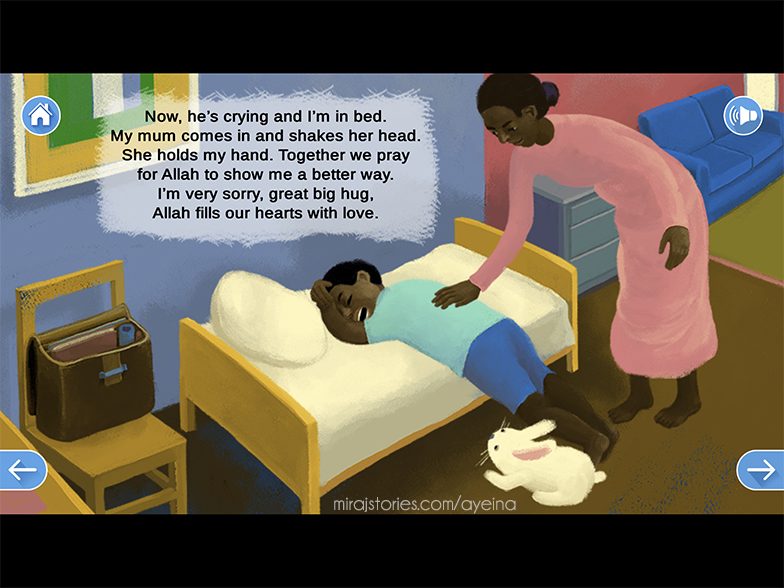
Ages 13 and up (Teens and Young Adults):
One can explore a range of dialects, voices, and points of view while introducing teens to different cultures in a meaningful way to help build empathy. Young Adult books are for readers aged 12-18 and 16-25. These books can be nonfiction or fiction, educational and entertaining, and they must hold the attention of the target age group and speak to them emotionally and intellectually by being very relevant to their lives. YA books can be written in any genre (historical, crime, etc.).

READ: 30+ Islamic Stories for Muslim Kids




